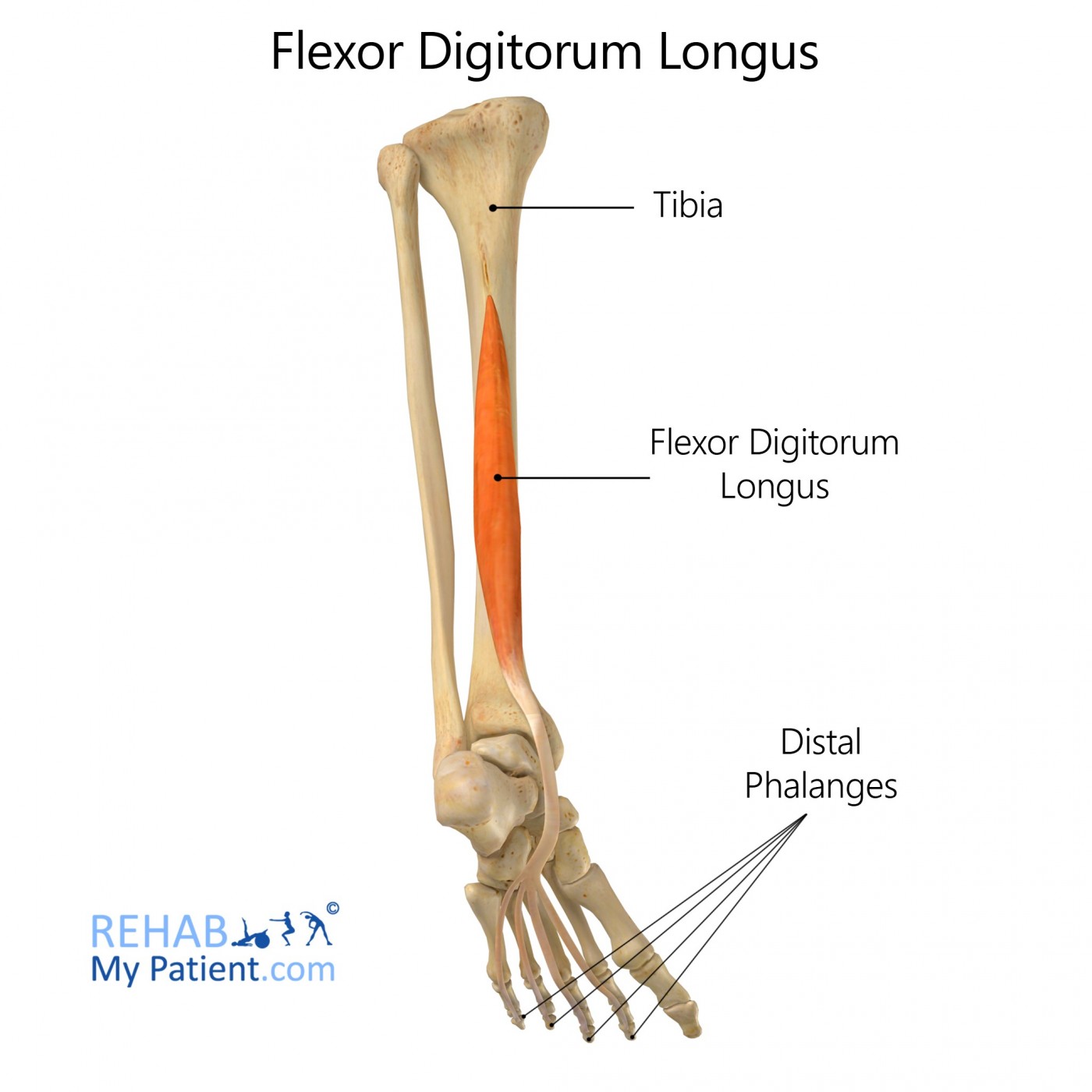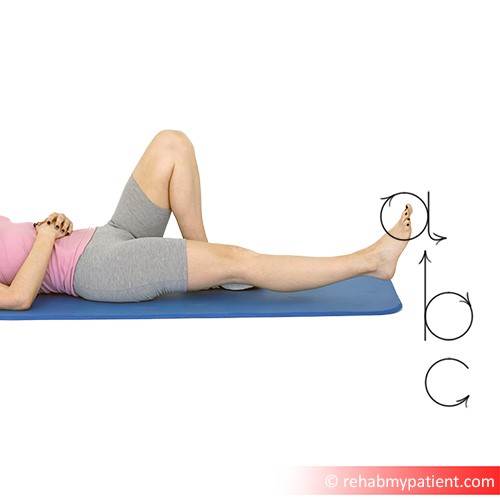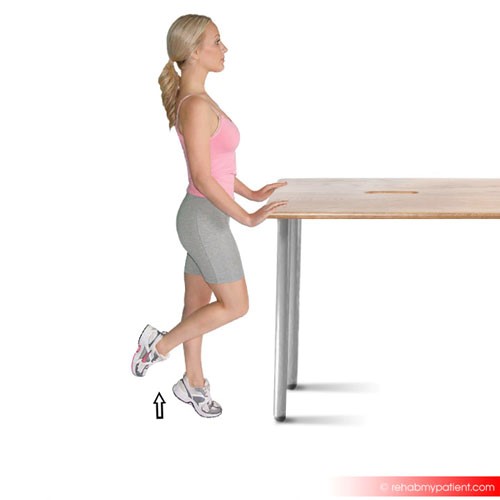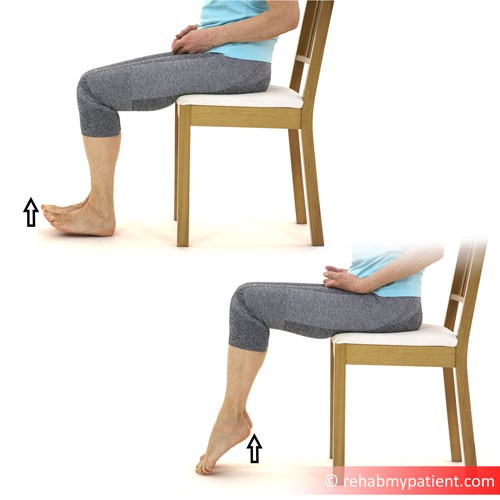Flexor Digitorum Longus
Posted on 23rd Jul 2020 / Published in: Toe

General information
The muscle is located on the inner region of the leg, close to the tibia. At its point of origin it is narrow and pointed; however, it progressively widens and becomes larger as it travels downward.
Literal meaning
“Flexor” indicates that the main action of this muscle is flexion, “digitorum” refers to a digit (in this case toe) and the word “longus” describes the length of the muscle. Literally, it is a long muscle that flexes the toes.
Interesting information
The muscle is instrumental during walking as it helps with gripping the ground and thrusting the body frontward off the toes at the start of every step.
Origin
Lower section of the body of the tibia.
Insertion
In the sole (bottom surface) of the foot and into the bottom of the terminal phalanges of the four lesser toes, which are found at the tip of the toes.
Function
Its primary function is to flex/curl the phalanges of the second, third, fourth and fifth lower digits (toes). It also facilitates plantar flexion, which is a movement of the foot that increases the angle between the shin and the dorsal surface of the foot; and aids with the outward turning of the dorsum of the foot.
Nerve supply
Tibial nerve
Blood supply
Posterior tibial artery

Relevant research
In cases where persons have been found to suffer from an acquired flexible flatfoot deformity, for which there have been limited validated management protocols, studies have suggested that the mild cases can be adequately treated with a combination of a medializing calcaneal osteotomy and a transfer of the flexor digitorum longus. In more severe cases, an additional procedure would be required for sufficient correction of the deformity.
Vora, A. M., Tien, T. R., Parks, B. G., & Schon, L. C. (2006). Correction of moderate and severe acquired flexible flatfoot with medializing calcaneal osteotomy and flexor digitorum longus transfer. The Journal of Bone & Joint Surgery, 88(8), 1726-1734.
Flexor digitorum longus exercises
Strengthening of the muscles of your ankles and feet is crucial as it improves agility, steadiness and rapidity. This can easily be done by:
- Sit barefoot with one leg stretched out in front of you. Use your toes to draw the letters of the alphabet in the air then repeat using the other foot.

- Walking or running barefooted on uneven surfaces, such as sand, pebbles or grass. Do this for 10 – 15 minutes a few days weekly. Check carefully for broken bottles or other harmful objects before commencing this exercise.
- Standing on an even surface, raise up on your toes and try to maintain this position for approximately three seconds. Repeat 9 times and complete by doing 2 additional sets of ten. Too increase the effectiveness of this exercise, attempt it on each foot.

- Sitting with your knees bent and your feet placed flatly on the ground. Use your hands to firmly press your knees downward while attempting to lift your heels and keeping the balls of your feet planted on the floor. Contract your calf muscles for 3-4 seconds, then relax them and lower your heels to the floor.

Sign UP
Sign up for your free trial now!
Get started with Rehab My Patient today and revolutionize your exercise prescription process for effective rehabilitation.
Start Your 14-Day Free Trial